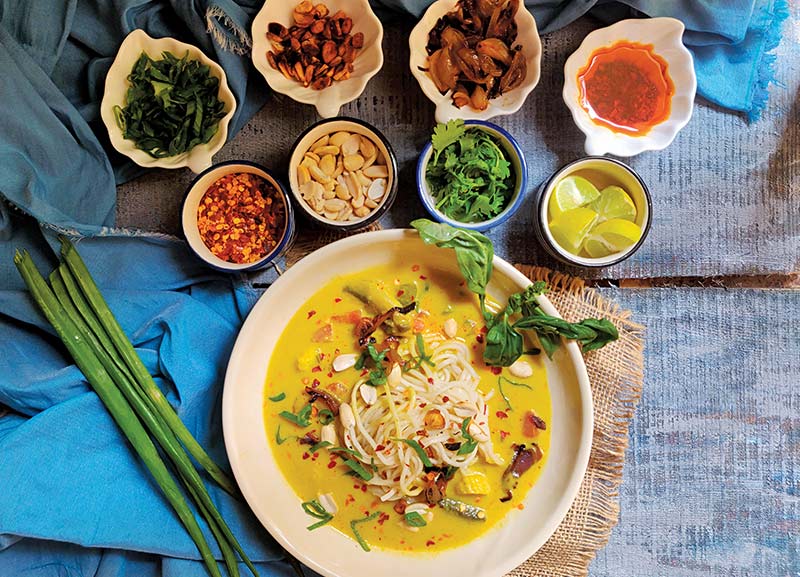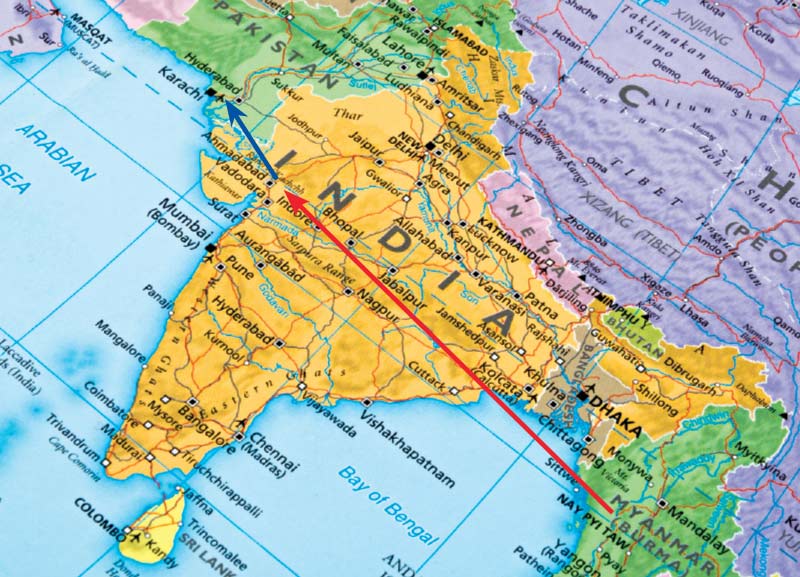

Khow suey is a Burmese dish that looks exotic but is actually quite simple to make. The colourful add-ons give brightness and texture to the dish. This recipe uses fried garlic but replaces deep-fried onions with caramelised onions. The chilli oil is made by adding red chilli powder and chilli flakes to hot oil. The lemon grass gives a very nice flavour so don’t skip it.

INGREDIENTS
Toppings:
METHOD
The Khow Suey Connection

Khow suey, also known as khao suey, khao soi or khausa, is often served at parties in Indian homes as a one-pot dish, paired with a long list of accompaniments. What’s more, its history is as interesting as the toppings it is served with!
Khow suey is believed to have come to India via Gujarati business owners that were deployed in Burma during World War II. The thick coconut soup-noodle combo made its presence felt in Gujarat first, before it moved to other parts of the country. In fact, it is also in Gujarat that it became a vegetarian dish with paneer, and later tofu, taking the place of meat and prawns. It is also believed that after partition, the Memon community from Gujarat that moved to Pakistan created an adaption of this dish that is known as khausa.
A dry version of this dish is sold as a snack on food carts in Yangon (formerly known as Rangoon). This is called shwedaung khao suey and it is almost like a crunchy salad.
List 10 toppings you would like to add to your khow suey.







